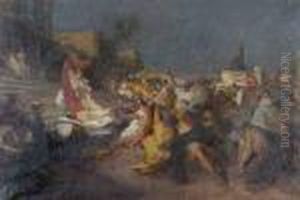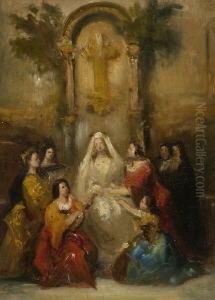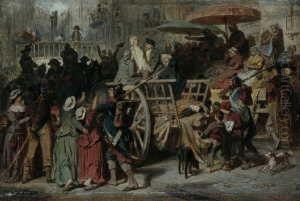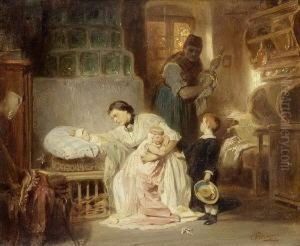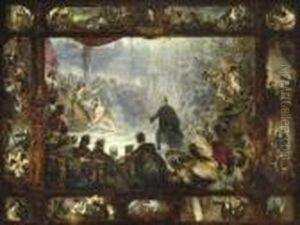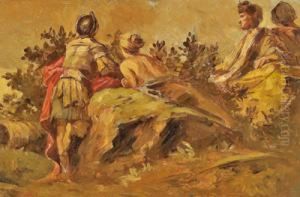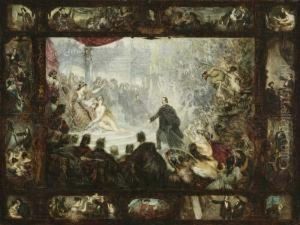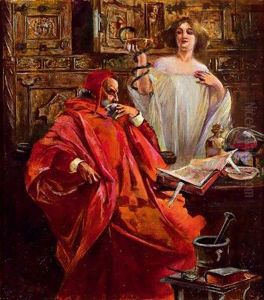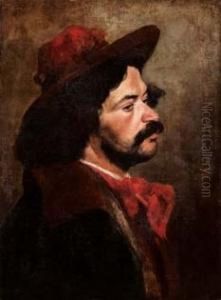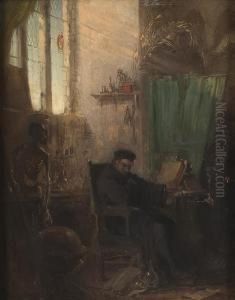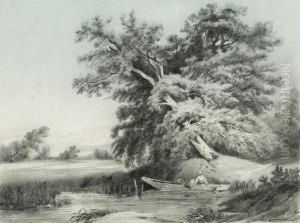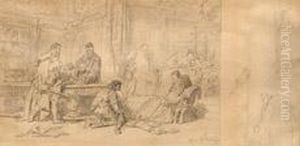Carl Theodor Von Piloty Paintings
Carl Theodor von Piloty was a German painter born on October 1, 1826, in Munich. He became one of the most prominent representatives of the Munich School, a group of artists who played a key role in the development of 19th-century German art. Piloty was especially known for his historical paintings, which were characterized by their dramatic intensity, detailed realism, and vibrant color palette.
Piloty's father, Ferdinand Piloty, was an engraver and lithographer, which provided Carl with an early exposure to the arts. After his father's death, Carl began his formal training at the Academy of Fine Arts Munich under the tutelage of Karl Schorn and Julius Schnorr von Carolsfeld. He quickly distinguished himself as a talented artist, winning several awards and scholarships which allowed him to travel and study in Italy, a trip that would have a lasting influence on his style and subject matter.
In 1856, Piloty was appointed as a professor at the Munich Academy, a position he held for the rest of his life. As a teacher, he was highly influential, advocating for a rigorous study of nature and history, and encouraging his students to develop a solid foundation in drawing and painting techniques. Among his most famous students were Franz von Lenbach, Hans Makart, and Franz von Defregger, who would all go on to make significant contributions to German art.
Piloty's major works often depicted scenes from German and Roman history, imbued with a sense of drama and emotional depth. Some of his most celebrated paintings include 'Seni at the Dead Body of Wallenstein' (1855), 'Thusnelda at the Triumph of Germanicus' (1873), and 'The Death of Wallenstein' (1865). These works not only showcase Piloty's mastery of form and color but also reflect his deep engagement with historical themes and his ability to bring these past events to life with a contemporary relevance.
Carl Theodor von Piloty's influence extended beyond his paintings and pupils. He played a crucial role in the development of the Munich School and helped to establish Munich as a major center of art in the 19th century. His commitment to historical accuracy, combined with his dramatic flair, set new standards for history painting in his time. Piloty died on July 21, 1886, in Munich, but his legacy lives on through his contributions to German art and the many students he mentored, who continued to propagate his teachings and approach to painting.
